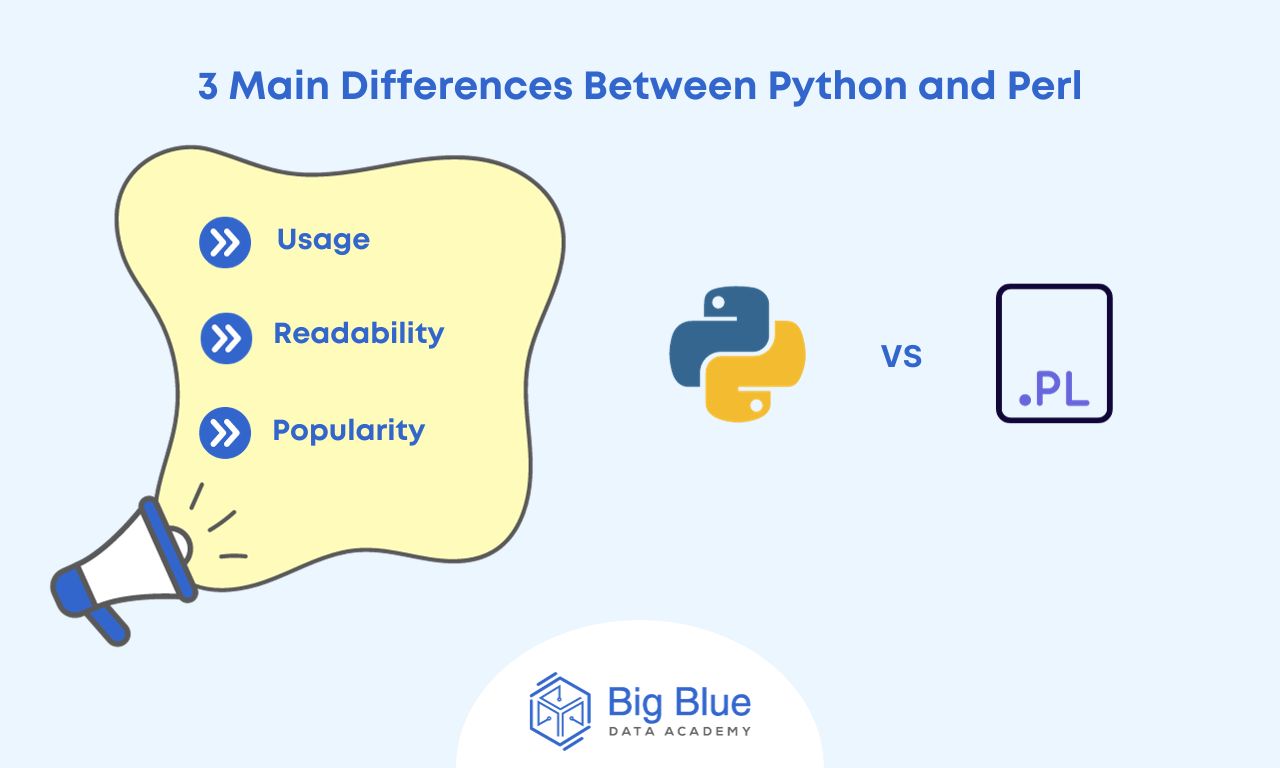Perl vs Python: What Are Their Main Differences?
Two popular languages in the field of programming and beyond are Python and Perl.
If you're in the process of searching for the ideal programming language based on your specific needs, we've created this guide for you.
In today's article, we'll explore:
What is Python
What is Perl
Key differences and similarities between Python and Perl.
Let's start with two fundamental definitions.
What is Python?
Python is a high-level, general-purpose programming language.
It was initially designed by Guido van Rossum in 1991 and developed by the Python Software Foundation.
Python has dynamic features and supports object-oriented programming techniques. Its primary development goal was to emphasize code readability, allowing developers to express concepts in fewer lines of code.
Python is popular for its suitability for rapid application development. Many applications we use today are built with Python.
Some well-known examples of applications include Uber, Instagram, and Spotify.
What is Perl?
Perl is a high-level, general-purpose programming language. It's interpreted and dynamic, developed by Larry Wall in 1987.
Perl was originally developed for text processing, such as extracting required information from a specified text file and converting the text file into another format. In terms of syntax, Perl resembles C.
Furthermore, it supports procedural and object-oriented programming.
Now that we've seen what Python and Perl are, let's move on to how they differ from each other.
Perl vs Python: Key Differences
Python and Perl are cross-platform languages, which means you can run code written in these languages on various operating systems without significant modifications.
However, despite sharing some similarities, Python and Perl are quite different.

Let's take a closer look at their differences.
Difference #1: Usage
Perl is primarily used for creating Common Gateway Interface (CGI) scripts in projects like Bugzilla (a bug tracking tool for all types of testing) and Splash.
It is also used as a system programming language in Debian (a Linux distribution consisting of open-source software).
Additionally, Perl is used as a scripting language for processing large volumes of data for tasks such as generating reports, among others.
On the other hand, Python is commonly used for web development and in areas of machine learning and artificial intelligence (AI).
It is popular in the field of data analysis and is the top choice, alongside R, for data scientists and data analysts.
Difference #2: Readability
Python is known for its clean and readable syntax, making it accessible to developers who are just starting their programming journey.
In contrast, Perl has a syntax similar to the C language, which is considered more complex for beginners.
Perl allows more flexible and complex code structures.
In Perl, white spaces are not significant, while in Python, white spaces have meaning, and incorrect spacing will result in syntax errors.
Difference #3: Popularity
Python is highly popular and in high demand as a programming language, while Perl has seen a significant decline in popularity.
As shown in the Google Trends graph below, Python (in blue) is on the rise and has much higher demand compared to Perl (in red).

To Sum Up
We've discussed Python and Perl in detail, analyzing their differences.
The choice between Python and Perl will depend on individual needs and preferences.
From a more objective standpoint, Python offers more capabilities, suitable for both beginners in programming and data scientists.
If you are intrigued and want to learn more about Python and data science related topics, follow us and we will keep you posted!


.jpg)